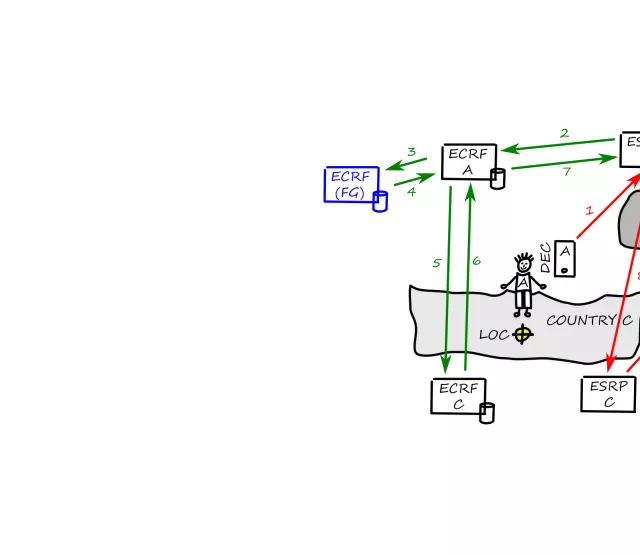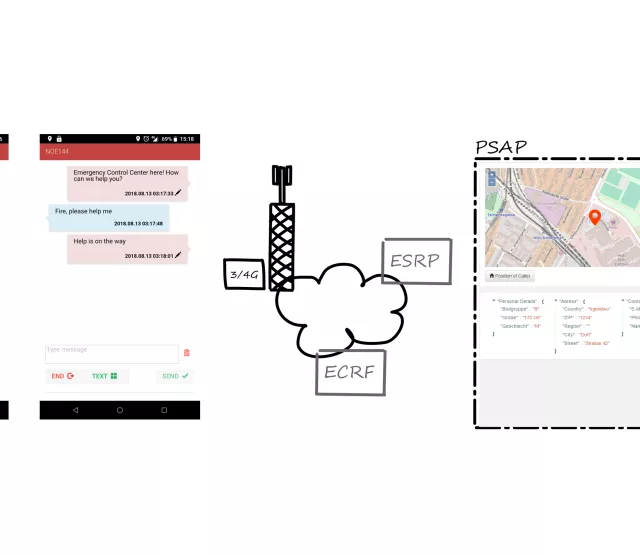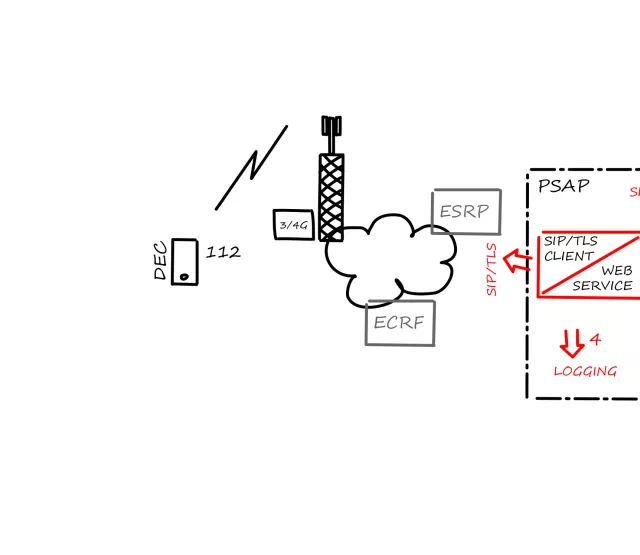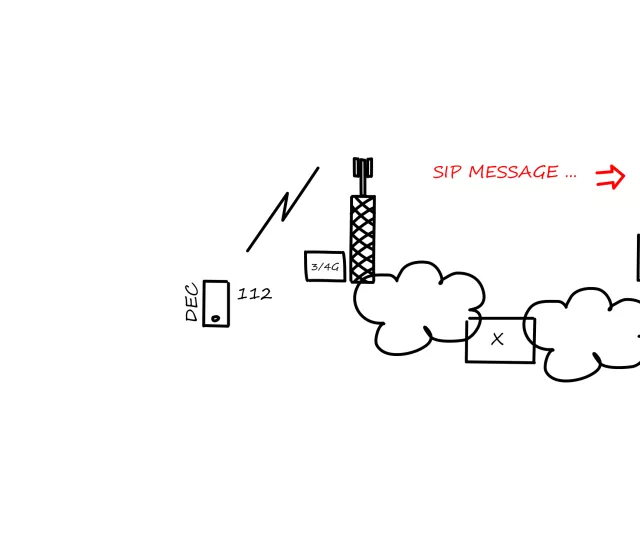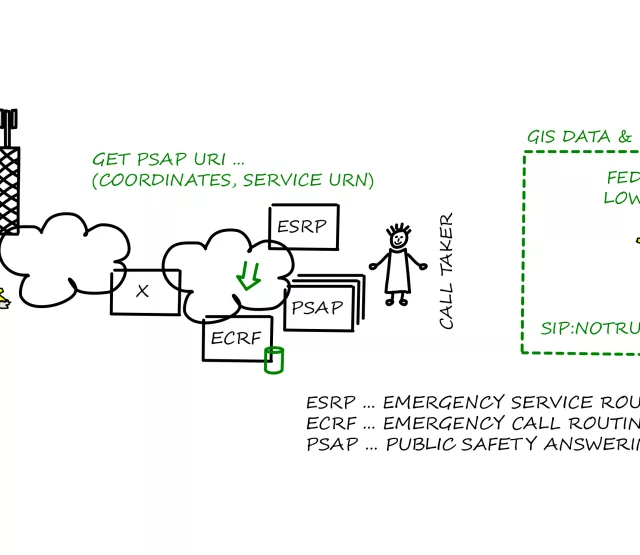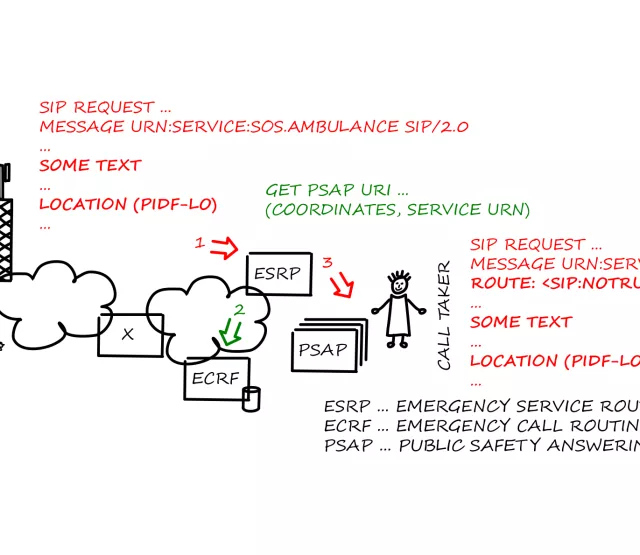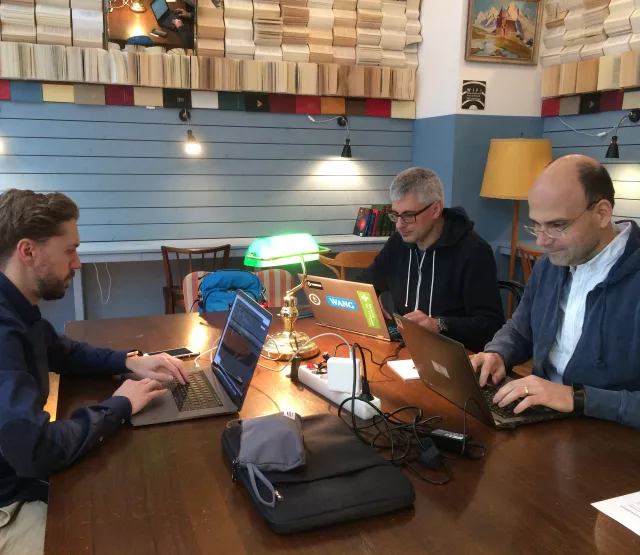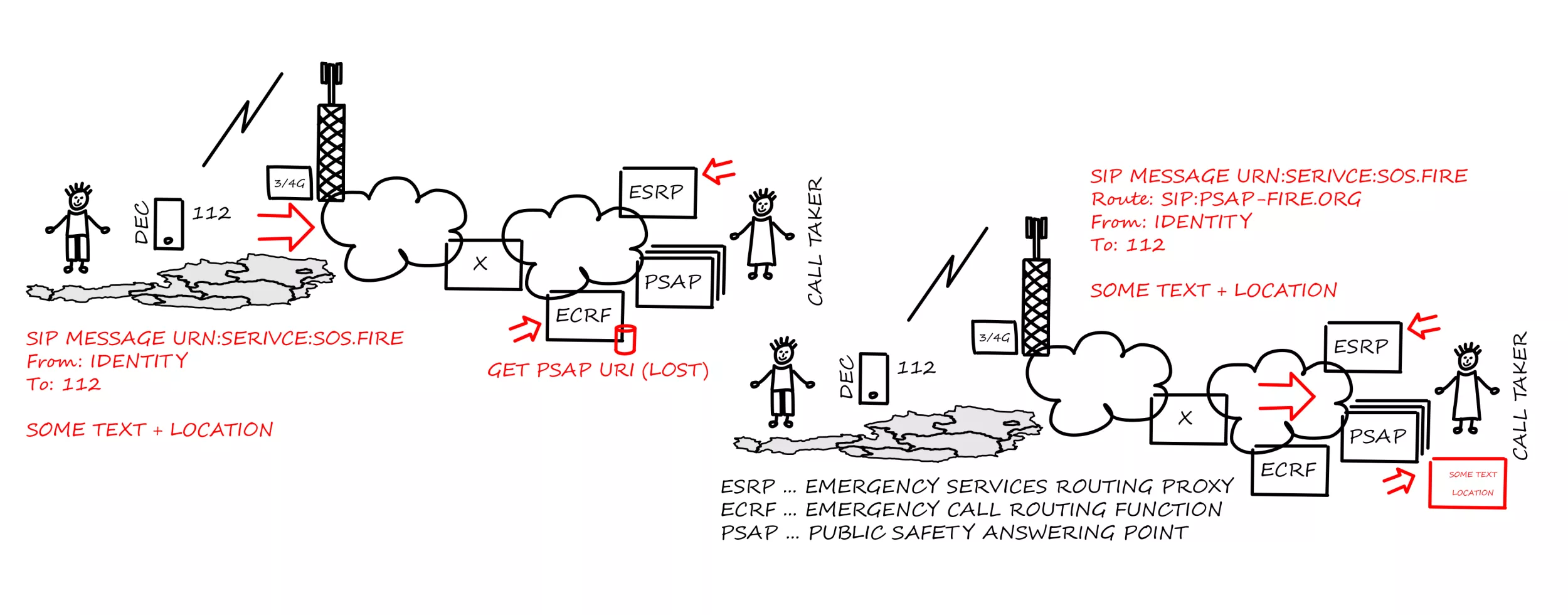
Förderjahr 2017 / Project Call #12 / ProjektID: 2347 / Projekt: DEC112
Perhaps you may wonder why the project's name is DEC112. The answer is quite simple - the term DEC stands for "deaf emergency calling" and 112 is not only the single European Emergency number but also synonym for NG112.
Next Generation 112 as term comprises several aspects (technology, standardisation, changes in operation, etc) of how we are contacting emergency services soon. Some things might be disruptive therefore the D may also mean digital or disruptive, but let’s start with some basics.
Accessing emergency services, for the most part, is limited to an ordinary voice call though some areas now support SMS to access emergency services. Emergency calling is based on straightforward technical building blocks and a few legal/regulatory aspects. Technical elements, typically part of an incumbent telephone service provider, ensure that emergency calls are routed to the most appropriate emergency center or public safety answering point (PSAP). Typically, routing utilizes static information such as dialling code/area code and a table that maps those codes to centers which are identified by unlisted and often undialable numbers. That works well in a legacy environment but causes some challenges in the case calls originate from different sources or utilize different technologies like VoIP or VoLTE. NG112 provides answer to such challenges in defining a Session Initiation Protocol (SIP) based architecture and functional elements to implement a mapping and routing process that has the potential to support any originating technology subject to the condition that sufficient location information is available. The following introduces core elements that are the ESRP (Emergency Services Routing Proxy) and the ECRF (Emergency Call Routing Function). Please note that these elements, among others, and their interfaces are currently being standardized by ETSI (SC EMTEL) and have already been introduced as NG9-1-1 architecture by the National Emergency Number Association in the US.
The ESRP is the base routing function for emergency calls. The primary input to an ESRP is a SIP message that means, only the call set up via SIP signalling is routed through intermediate functional elements - media (audio, video or text) is transmitted end-to-end. The output is a SIP message with a Route header (possibly) rewritten and, in some cases, additional manipulation of the message content.
To do its job, the ESRP has an interface to the ECRF for location based routing information. As already mentioned, emergency calls will be routed to the appropriate PSAP based on the location of the caller. The functional element responsible for providing mapping information to querying entities is the ECRF. The ECRF supports a protocol (Location to Service Translation, LoST) by which location information and a Service URN serve as input to a mapping function that returns a URI addressing the most appropriate PSAP for the caller’s location.
DEC112 provides such functional elements as open source and hosts these services to run an Austrian pilot that not only improves accessibility but also introduces the standardized method to contact an emergency center from IP connected devices, therefore we also consider D as digital and disruptive. More on this later!


